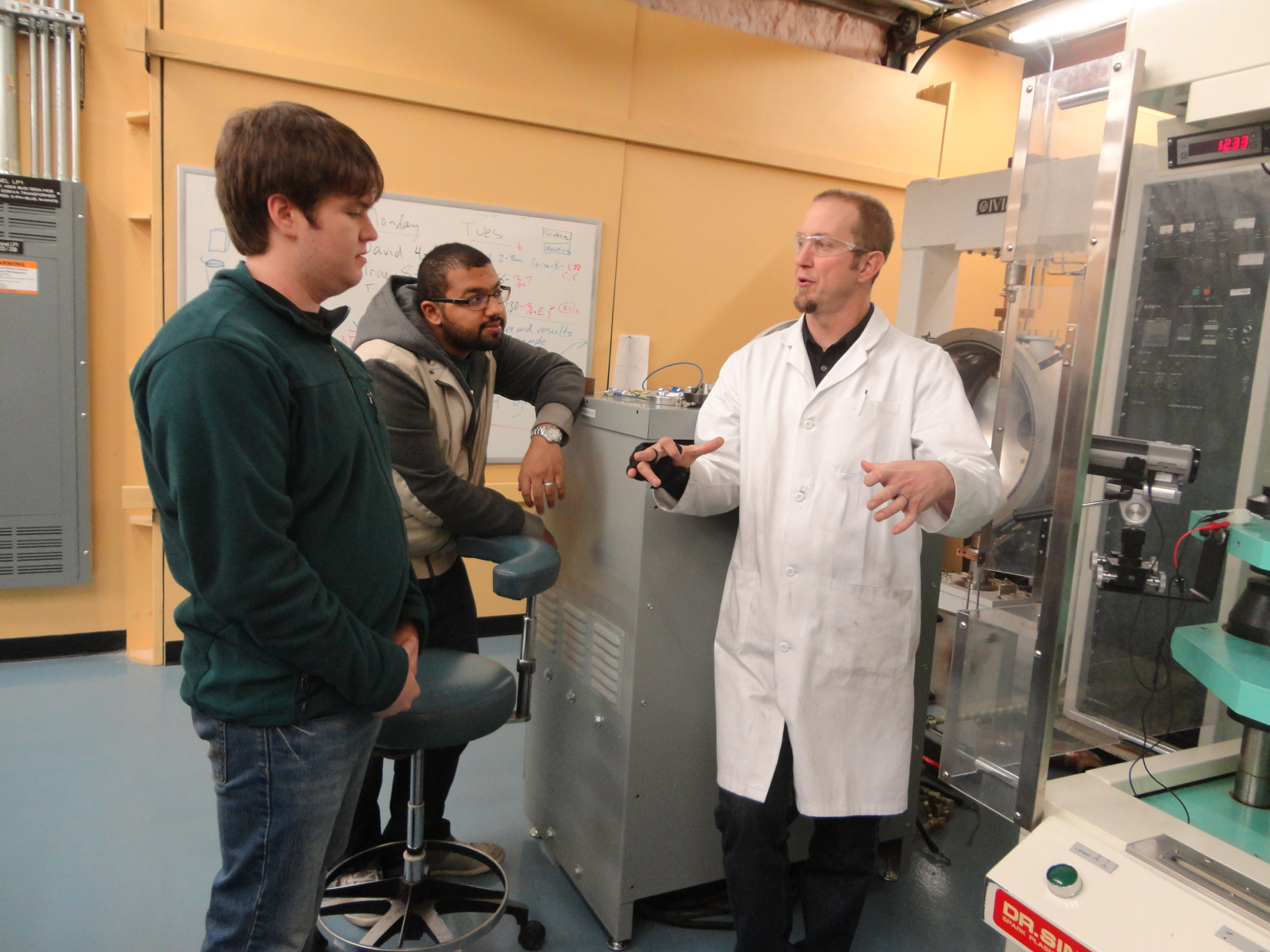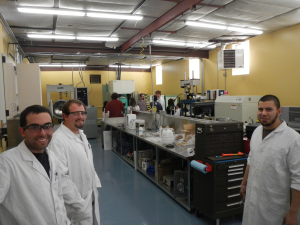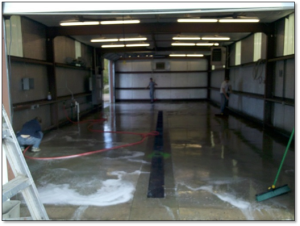
For Troy Holland, it’s a material world – filled with ceramic, metals and blends of the two.
The assistant professor of mechanical engineering specializes in creating new functional and durable materials from metals, ceramics and cermets (ceramic-metal composites). Holland and his students also experiment with different techniques and equipment in which to manufacture these materials.
“My focus really is on creating metal- and ceramic-based materials for specific purposes and testing and analyzing their mechanical and functional properties,” he said. 
Holland recently took over a warehouse at Colorado State University’s Motorsports Engineering Research Center on West Vine Drive and converted it into a laboratory filled with the high-end equipment needed to create and test materials.
Holland is hosting an open house for his new laboratory on Wednesday, March 25 from 5-7p.m. He and his students will be on hand to talk about the research they are doing, the materials and manufacturing capabilities of the lab itself, and will be displaying posters about each aspect of the lab.
We recently toured Holland’s lab and asked him some questions about his research:
How long have you been at CSU? Why CSU?
I joined the CSU community in August 2013.. As an experimentalist, I wanted a source of practical and capable students to populate my lab. Often you can build scientists, but it is much harder to build common sense and practical experience.
How long has your lab been open?
We officially turned our electricity on August 27, 2014 and we began experimentation Dec 14, 2014.
What sets your lab apart from others at CSU or at other universities? Do you have unique pieces of equipment?
I think my lab adds to CSU’s materials and manufacturing capabilities with the extent of high-temperature testing and processing we do. Much of our equipment operates up to and a bit over 2000̊C. Our Spark Plasma Sintering (SPS) equipment is uncommonly large which all ows us to produce materials of real extents with startling properties. The major unique pieces of equipment are our SPS of course, a heavily customized field- and current-effect hot press, a Gleeble 2000, and the ability to do creep and other testing at over 1200̊C. Basically we stand apart in the completeness of our capabilities.
ows us to produce materials of real extents with startling properties. The major unique pieces of equipment are our SPS of course, a heavily customized field- and current-effect hot press, a Gleeble 2000, and the ability to do creep and other testing at over 1200̊C. Basically we stand apart in the completeness of our capabilities.
So you create these ceramic- and metal-based materials. Who uses these kinds of materials and what do they use them for? Why ceramics and metals?
The specific applications are fairly wide-ranging as we are what I like to call “materials agnostic.” If you have a problem to solve or a function you need with materials I can guarantee we would have fun sorting it out.
I guess some specifics will paint this picture, so here are some of the projects on going: Boron-carbide and aluminum functionally graded composites for armor and high-temperature cylinder applications, zinc oxide for basic research and thermoelectric materials research, cerium oxide for functional surfaces and fuel cell applications, nitinol foams and syntactic foams for wear; self-healing structures; and smart structures, electride/metal composites (can’t discuss the app unfortunately), hydroxyapatite (synthetic bone) and boron nitride nanotubes/sheets, self-sustaining high temperature synthesis of several oxide systems for numerous apps, and the list actually goes on and on!!
Ceramics and metals cover a huge range of applications and are increasingly demonstrating functional property combinations unachievable by other materials.
Plus, to be truthful, I just like working with glowing hot materials.
Is there a lot of materials-focused research conducted at CSU? How does your research fit in and what is new/different about it?
There really is a lot of materials research here!! To try and increase resources, interactions, and facilities for materials we have designed, and are currently implementing, a new Materials Science and Engineering graduate degree program at CSU. We hope to start accepting students to this School of Advanced Materials Discovery (SAMD) in January 2016.
I think the largest thing my research provides to CSU is a solid-state high temperature materials processing capability. The materials and work we do cover energy, structural, biomedical, and electronics areas so I hope to see a great deal more collaborations developing here shortly.
Why should people visit and tour your new lab?
Firstly, to see what we have to offer the research community at CSU. Secondly, I am proud of the research my students have been performing and I really think folks would be entertained and enlightened about some clever work.